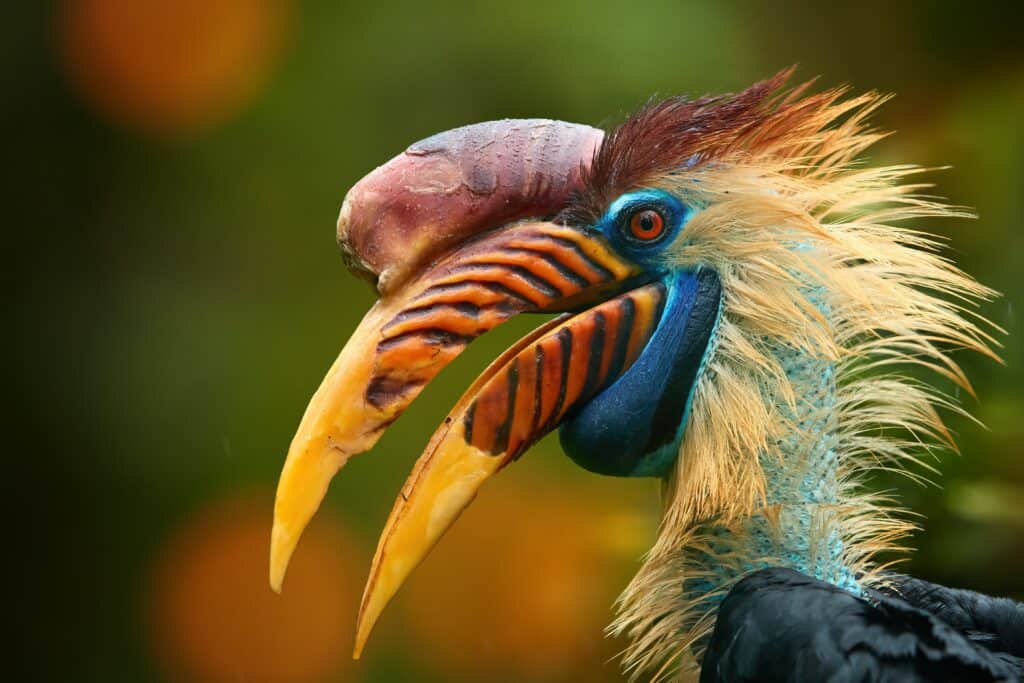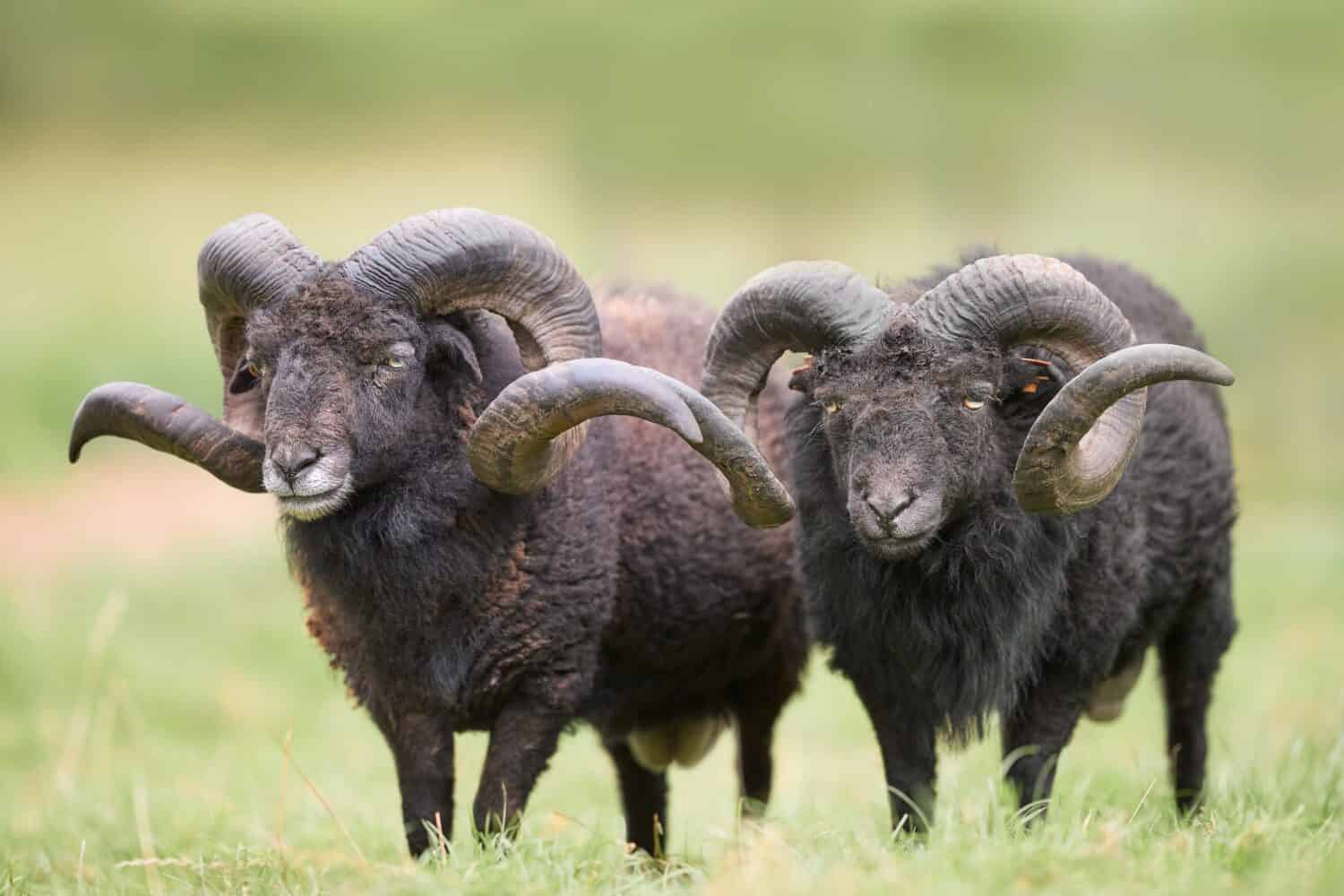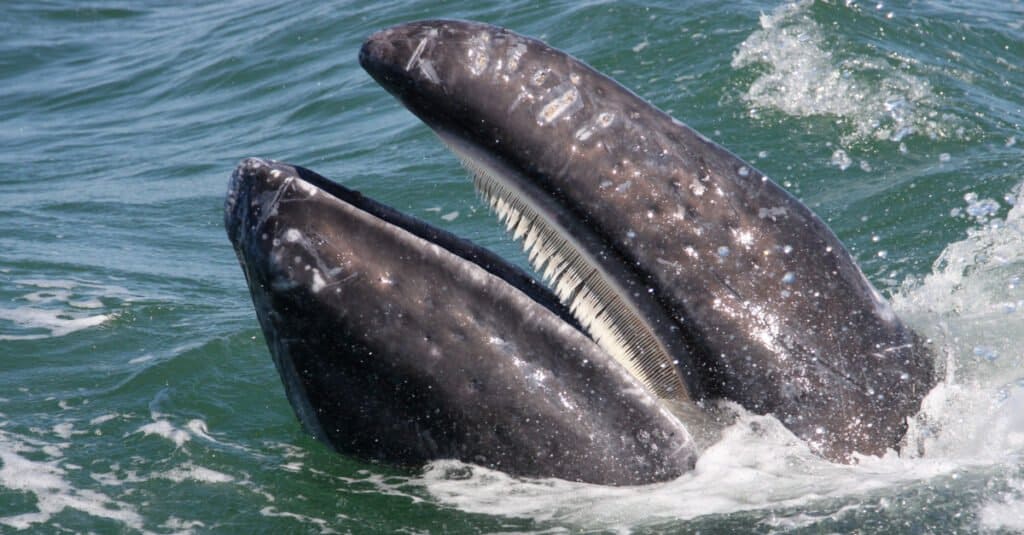Keratin is a tough and insoluble fibrous protein found in animal cells. In animals, it forms the structure of hair, fur, feathers, nails, hooves, horns, claws, and scales.
What is Keratin?
The word comes from the Greek word keras or ceros, meaning “horn.” Keratin is strong and durable, making it ideal for forming tough but non-mineral structures on mammals, amphibians, reptiles, and birds.
Keratin is produced naturally in the body. It is the main component of structures that grow from the skin. The protein is rich in sulfur, insoluble in water, and typically not digestible by animals.
Keratin is similar to chitin, another tough protein. But chitin is only found in invertebrates (crustaceans and insects.)
How to Pronounce Keratin
Keratin is pronounced |keh|-|ruh|-|tn|
What is it Made Of?
It’s not a single substance; instead, it’s made up of many different proteins. It is a very powerful material that is resistant to tearing and scratching.
Alpha-Keratin and Beta-Keratin

Birds have beta-keratin in their claws and beaks.
©Martin Mecnarowski/Shutterstock.com
There are two types of keratins: alpha-keratin and beta-keratin. Alpha-keratins are found in all animals, while beta-keratins are found in birds, reptiles, and some amphibians.
Alpha-keratin can be categorized as hard or soft. Hard alpha-keratin makes up nails, hooves, claws, and horns. However, feathers and hair are comprised of alpha-keratin.
Beta-keratin is found in birds’ beaks, bills, and claws and in the scales of reptiles. It has a different amino acid composition and structure compared to alpha-keratin. Further, beta-keratin is more resistant to water than alpha-keratin.
Examples of alpha-keratins in animals include:
- nails
- hair
- wool
- hooves
- claws
- horns
- baleen plates on whales
Examples of beta-keratins in reptiles and birds include:
Various Uses for Animals
Different animals use it in various ways. For example, keratin that makes up hair and feathers provides insulation against heat and cold. It also protects animal skin against dangerous UV rays from the sun.
Additionally, nails and hooves provide support and protection for an animal or human’s toes and fingers. And horns and claws provide defense against predators and rivals.
Examples in Mammals

Sheep wool contains hard keratin.
©Erwin Bosman/Shutterstock.com
In mammals, keratin is found in hair, wool, nails, claws, horns, and hooves. Here are some examples of how important it is to mammals.
In the wool of sheep. For example, wool that grows on sheep insulates the animal from cold during the winter. Sheep must be sheared each summer to keep them cool and protect them from ticks, lice, and mites because their wool grows year-round. Wool has high amounts of keratin, and some people extract the protein from wool.
In sloth fingers and toes. Sloths don’t have claws. Humans have keratin in their fingernails and toenails. Sloths have a sheath of the same material covering the bones of their fingers and toes.
In a polar bear’s fur. A polar bear’s outer hair, made of keratin, is actually hollow, like a straw. Light reflects off the translucent fur, making the bear appear white. The white fur insulates the bear from the cold and helps polar bears camouflage into their environment.
In nails, claws, horns, and hooves. For example, keratin makes up the hooves in mammals such as cows, goats, and horses. The tough material protects and provides support for the animals’ feet. Conversely, cats have keratin in their claws, which they use for hunting, climbing, and defense.
Keratin in Birds
Keratin in birds can be found in beaks, claws, and feathers. Bird beaks, or bills, comprise a bony core with an outer, tough layer of it. Birds use their beaks for various things, including building nests, self-defense, preening feathers, eating, and egg-turning.
Durable beta-keratin makes up bird feathers. Feathers on birds are similar to the hair on the head of a human. However, feathers are extremely important to birds, more so than hair for humans. Feathers help birds fly and retain warmth in cold environments, act as camouflage, and help attract mates. But, the environment can take its toll on bird feathers. They must molt to grow new feathers so they can maintain their function.
Keratin in Reptiles

Turtle shells include this vital protein.
©Joseph Alexander Cruz/Shutterstock.com
Keratin makes up scales and shells in turtles and snakes. Scales and shells protect against predators and help with temperature regulation. For example, in snakes, scales are used for movement and to help grip prey. And in turtles, the shell is a vital part of their anatomy, providing protection and support.
Keratin in Porcupines and Hedgehogs
Porcupines and hedgehogs have spines and quills that are modified hairs made from keratin. But, unlike hair, quills are sharp and are used for defense against predators. Porcupine quills can puncture skin and severely injure the attacking animal.
Hedgehogs also have quills made of keratin. To protect themselves, they roll into little balls of quills when threatened. Unlike porcupine quills, hedgehog quills don’t pack as much of a punch. They may somewhat deter predators, but hedgehog quills can’t pierce the skin, and vital organs like porcupine quills do.
Keratin in Baleen Whales

This protein makes up the baleen plates in baleen whales.
©jo Crebbin/Shutterstock.com
Keratin is what makes up the structure of the plates on baleen whales. Baleen plates may look like teeth but are a filtering system. When the whale opens its mouth, water rushes in. The baleen filters out the water and leaves food, such as krill, for the whale to eat. Baleen plates are massive. Each plate can weigh up to 200 pounds and ranges from 1.6 to 11.5 feet long.










